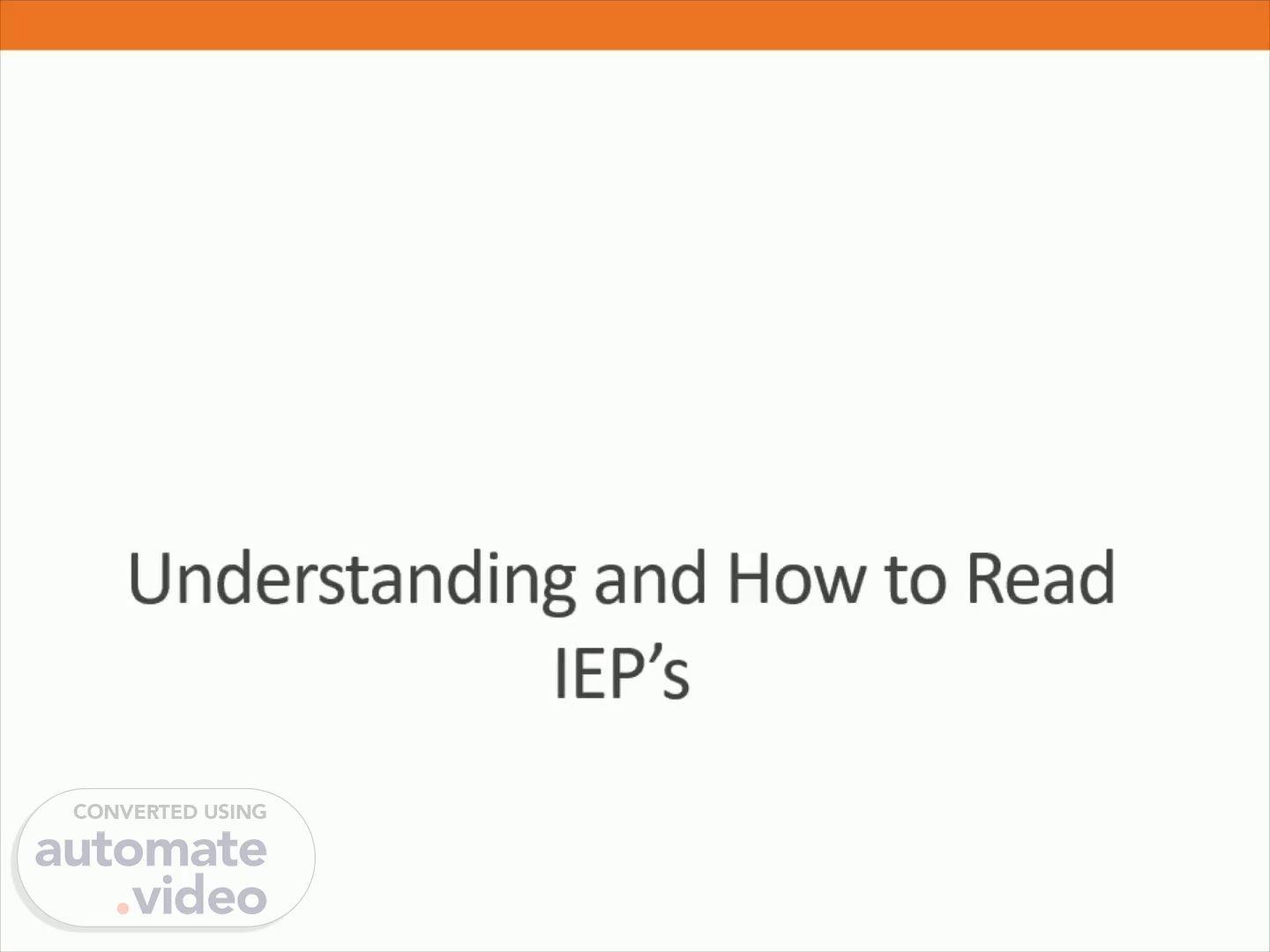
Understanding and How to Read IEP's
Scene 1 (0s)
Understanding and How to Read IEP’s. .
Scene 2 (6s)
[Audio] Individualized Education Program is created to address each students needs. The program identifies each students needs, goals, classroom placement and services..
Scene 3 (21s)
[Audio] Initial Individual Education Plan determines eligibility for special education. An annual Individual Educational Plan must be held at least once a year. Triennial is every 3 years, schools must conduct new assessments to determine a student's progress, and discuss those assessments at an Individual Educational Plan meeting. Amendment/ Addendum—The school can request a meeting at any time to modify an existing Individual Educational Plan meeting. After written request, the IEP must be held within 30 calendar days. 30-Day/Transfer—An Individual Educational Plan meeting must be held within 30 calendar days of transfer to a new school district to discuss placement options and services within the new district. New school must implement the old anIndividual Educational Plan provide 'comparable' services for the first 30 days. Manifestation Determination Individual Educational Plan. If a child with an Individual Educational Plan is suspended for 10+ days in a school year or is recommended for expulsion, a manifestation determination meeting must be held. If the behavior was closely related to the disability, no further discipline can happen and the school must conduct a behavior assessment..
Scene 4 (1m 46s)
[Audio] The Written Individual Education Plan includes Statement of Eligibility Present Levels of Performance Annual Goals and Objectives Statement of Services Statement of Placement.
Scene 5 (2m 5s)
[Audio] Only one category needs to be present in order be found eligible for the special education program The eligibility category does not limit the student to any specific placement, service or therapy.
Scene 6 (2m 28s)
[Audio] Services available are: Speech and language therapy: Helps children develop expressive and receptive language skills and improve their pronunciation of sounds/ words. Occupational therapy: Helps improve fine motor and visual motor skills necessary for writing, drawing, copying and cutting. Adapted physical education: Helps children who have difficulty with motor skills to be able to participate in PE. Physical therapy: Helps children with physical limitations access their school environment. Psychological ( DIS) counseling, ERMHS/ ERICS therapy, or behavioral support services: Help children develop social and emotional coping skills and improve behavior through school-based (and school provided) supports. Transportation: For kids whose placement puts them in a school other than their home school or if a student's disability limits ability to get to school. Extended School Year Services: Special education summer school..